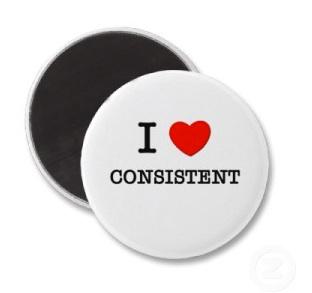Let’s keep in touch… What happened next
- Written by
- Rachel Hunnybun
- Added
- September 24, 2015

In my recent blog post Let’s Keep in Touch, I told the story of three charities and how they responded to me when I told them I had moved. I called them ‘Long’, ‘Medium’ and ‘Short Term’. The story continues…
I finally received my reply from Long Term and, I’m sorry to have to report, it was at best underwhelming. Incidentally Short Term took 18, yes 18, days to reply so their 10-day estimation was clearly a bit optimistic.
But back to Long Term. Don’t get me wrong, the response I got was OK but, you see, I can remember a time, about six years, when I told them I’d moved and within a few days I’d received an email so lovely and personal that I used it in presentations and team training days as a great example of something that made me feel really good.
At around the same time, give or take a year or two, Long Term sent me one of the best mailings I’ve ever received from a charity in the form of an impact report and thank-you message from a beneficiary. I remember it distinctly. I remember where I was standing when I opened it, I remember what it looked like, what it said, but most importantly how it made me feel. It made me proud to be giving a regular donation, it made me feel important, needed and part of a team of people working together to solve a problem. To this day I really wish I’d kept it. It was brilliant.

Is OK enough?
To be honest though, I’m not massively surprised about the response I received this time around. Thinking about the last few years, I really can’t remember much about anything they’ve sent me. It’s all been OK, but from a charity that has been able to bring me to tears with stories of their work, is OK enough? And this got me thinking – what on earth has happened to Long Term that started off making me feel like I was doing a wonderful thing?
What’s changed?
Of course, being an ‘insider’, I think I might know the answer. Staff turnover in our sector is pretty rapid, the team could have changed, leadership could have changed and different priorities and levels of investment into different areas could have changed. I would hazard a guess that the lady who emailed me years ago will have taken some trouble to find out my donor history and personalise a lovely email: that takes time, time costs money and, with no obvious ROI attached, is that money well spent?
But hello, I’m still here! I’m your donor and I remember how great you made me feel… but you’ve changed… does that mean you don’t really need me anymore?
Don’t get me wrong, I’m not here to single out Long Term. We’re all in this together, I’m a fundraiser too and I know that sometimes things that appear simple can be very challenging within some organisational cultures. But it’s really got me thinking.

Consistency sustains my trust
I started to think about what the common denominators were in brands that I trust and stay loyal to and there was one thing that stood out…
They all have one thing in common – they are consistent. I know what to expect and there are no surprises, solid customer service, good brand values, communications that fit with my expectations. They are organisations where any changes (bar price increases) tend to be positive ones, are generally explained to me and pitched in a way that leaves me feeling that my best interests are at heart.
These are the organisations I trust, the ones I recommend and the ones I stay loyal to. I know the tone, content and regularity of their contact and nothing seems to have changed for years and years as far as I’m concerned…
In fact that’s not likely to be absolutely true. They will most likely all have had a change of leadership, management and frontline staff. A few will have even changed their name but, as a customer, I feel completely comfortable that I know what to expect from the relationship.

Consistency makes us comfortable
In the main, as human beings, we graduate to people who are consistent… and, no, that doesn’t mean boring. I have a friend who is consistently spontaneous, I also have a friend who is consistently late and it’s kind of comforting, I know what to expect and I don’t worry when one doesn’t turn up on time or I suddenly find out the other has changed careers/houses/partners…again!
So, like change, inconsistency change makes us uncomfortable, we are very much creatures of habit and if something is unpredictable it unnerves us and if we’re unnerved we pull back, if we pull back… well, let’s just say it’s not the basis for a trusting and harmonious relationship.
How to achieve consistency when fundraisers move on?
So how do we reach consistency when the average tenure of a fundraiser is less than two years? What can we do to make sure that the inevitable change of personnel doesn’t affect our supporters’ experience?
Well a fair few years ago now, I worked for a commercial data company, and I used to regularly talk about the importance of having a strong data policy. Put simply, an organisationally agreed document that details a consistent way of recording and dealing with customer data, so no matter what changes take place, there is something that is set in stone meaning that the consistency and quality of customer data and how it is used is maintained. It should be a living document that make sure staff turnover never affected the integrity of the customer database.
On reflection, brand guidelines could be used as a similar example. Most organisations have something agreed at a high level that ensures consistency of the use of colours, logos and tone of voice.
So, I’m sure you can see where I’m going, maybe we should be looking at ways of ensuring that our supporter experience is set in stone. Something that goes beyond a ‘fundraising promise’ and something that everyone in the organisation buys into, is committed to and invested in by trustees and CEOs.
And that is the key, because something that is owned by the organisation will keep the level of supporter experience consistent regardless of the team in post. The harsh reality is that most of our donors will (we hope) outlive our tenure as fundraisers, so let’s make sure that their experience in 10 years time is every bit as good as we wanted it to be the day they joined us.
This article first appeared on the fabulous UK Fundraising site on 4th August 2015 and is reprinted with permission.
Rachel Hunnybun is an experienced direct marketing and strategic business development professional and has worked in both the commercial and not-for-profit sectors. Since moving into the charity sector, she has worked for international, national, regional and local charities of varying sizes and has a strong background in insight driven strategic development with a particular specialism in individual giving and supporter experience.
















